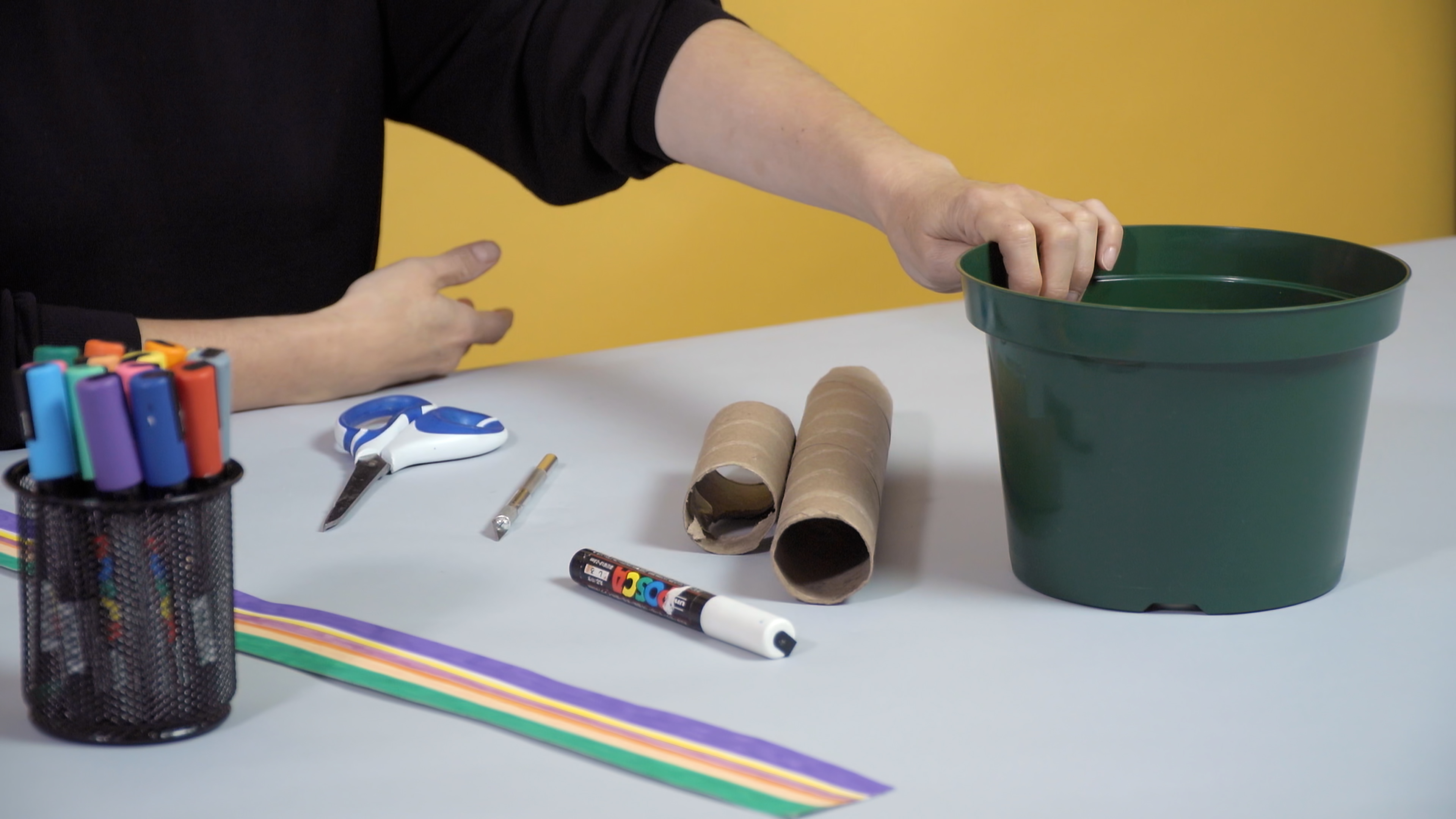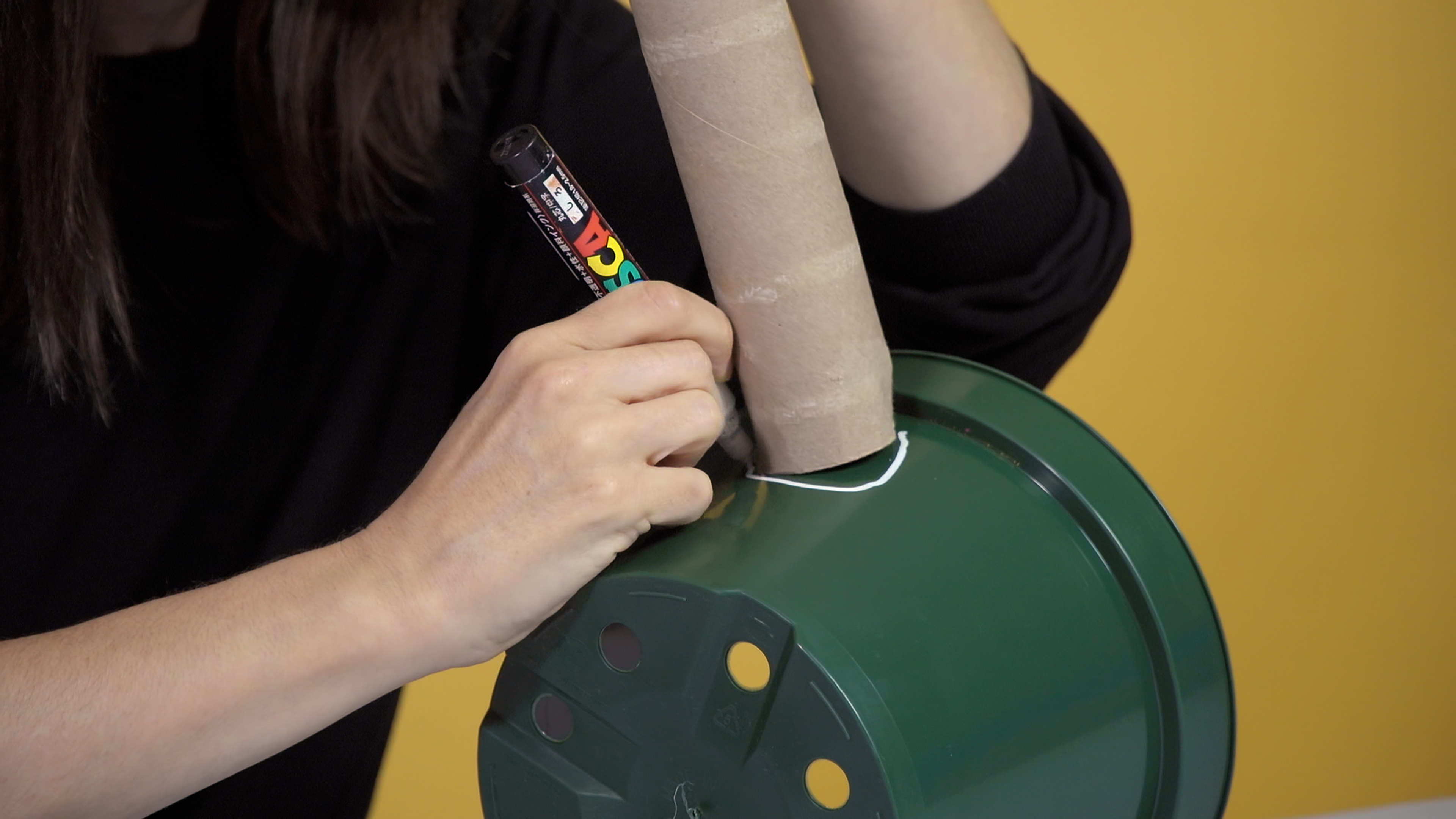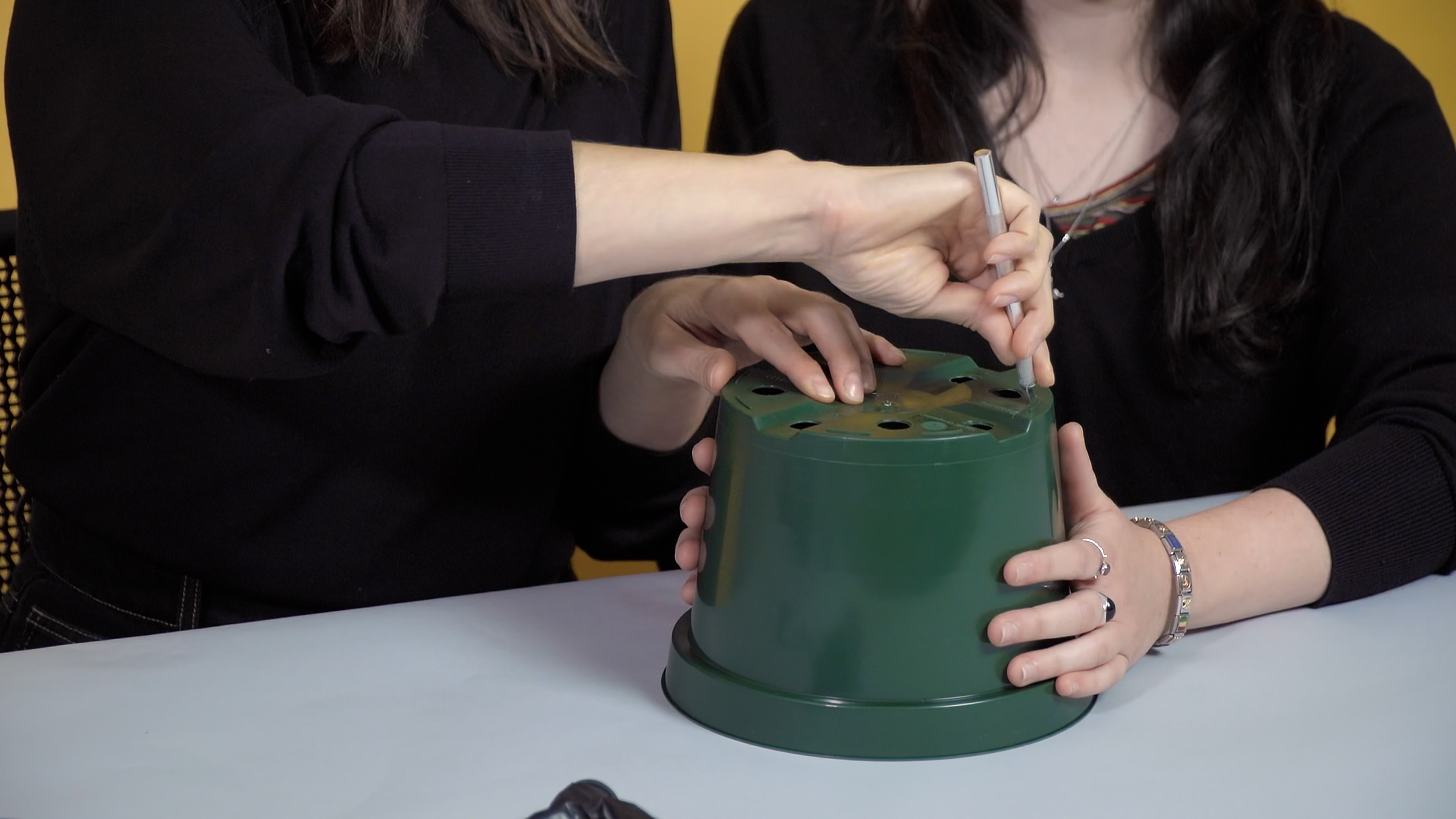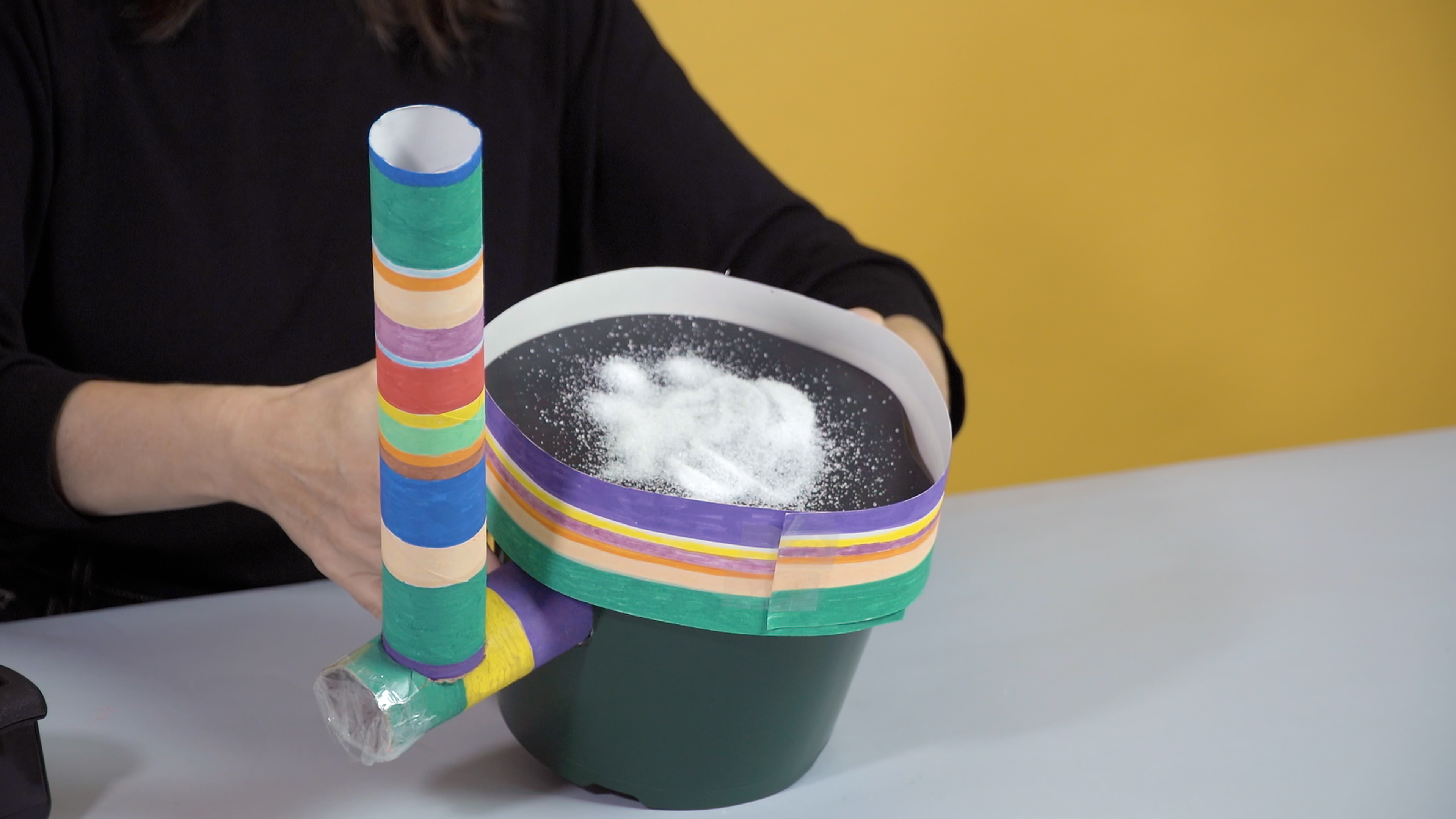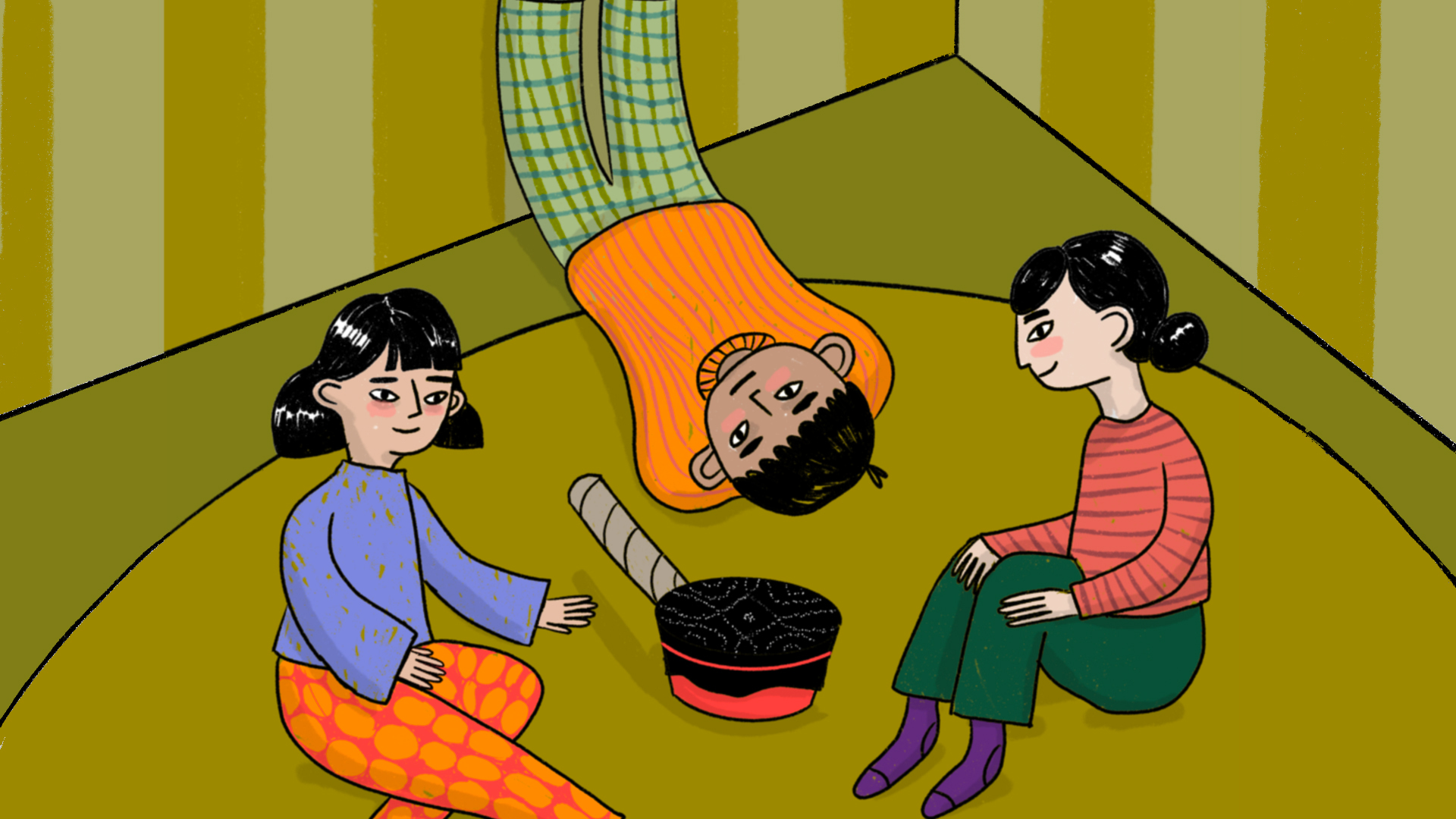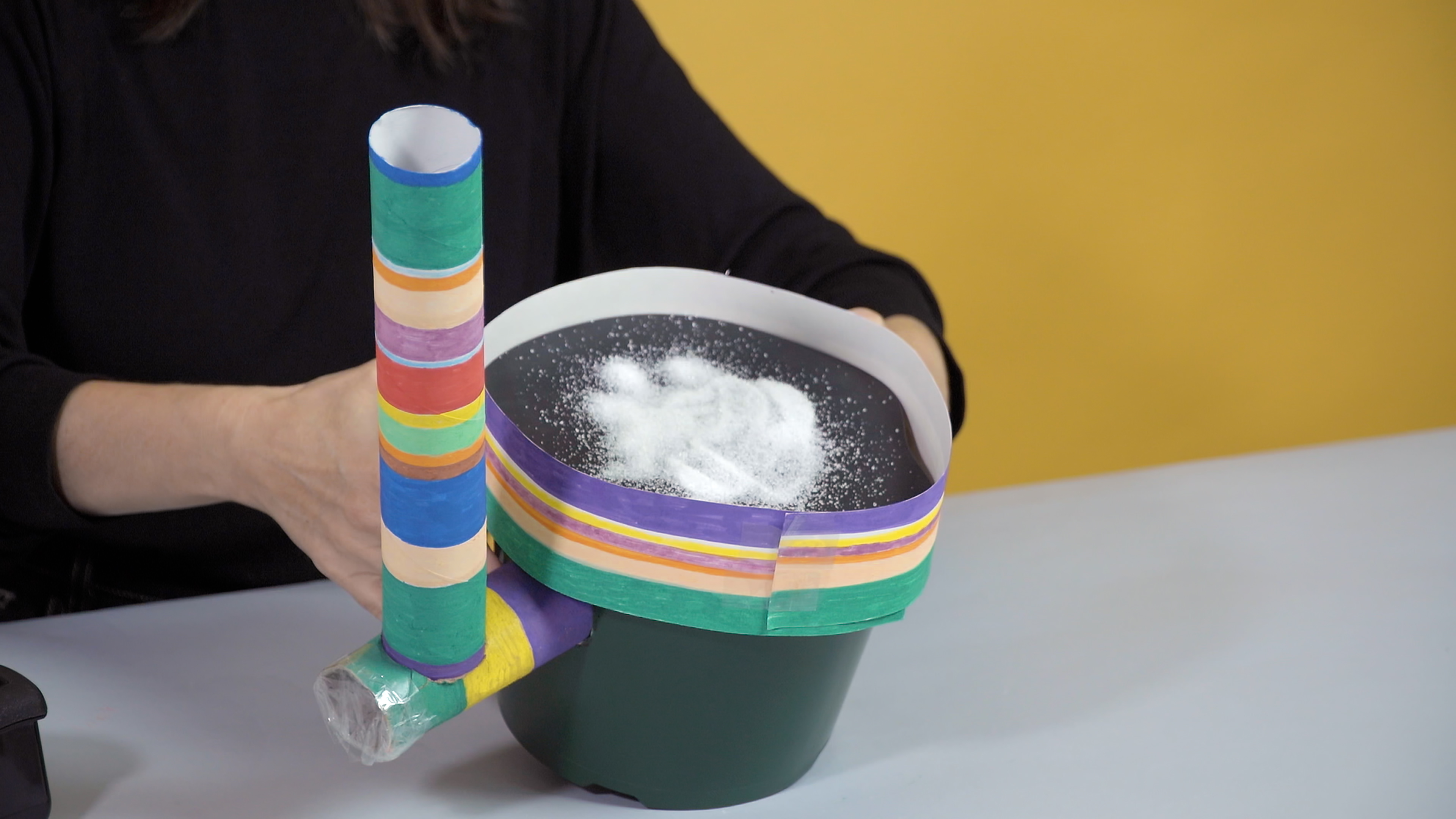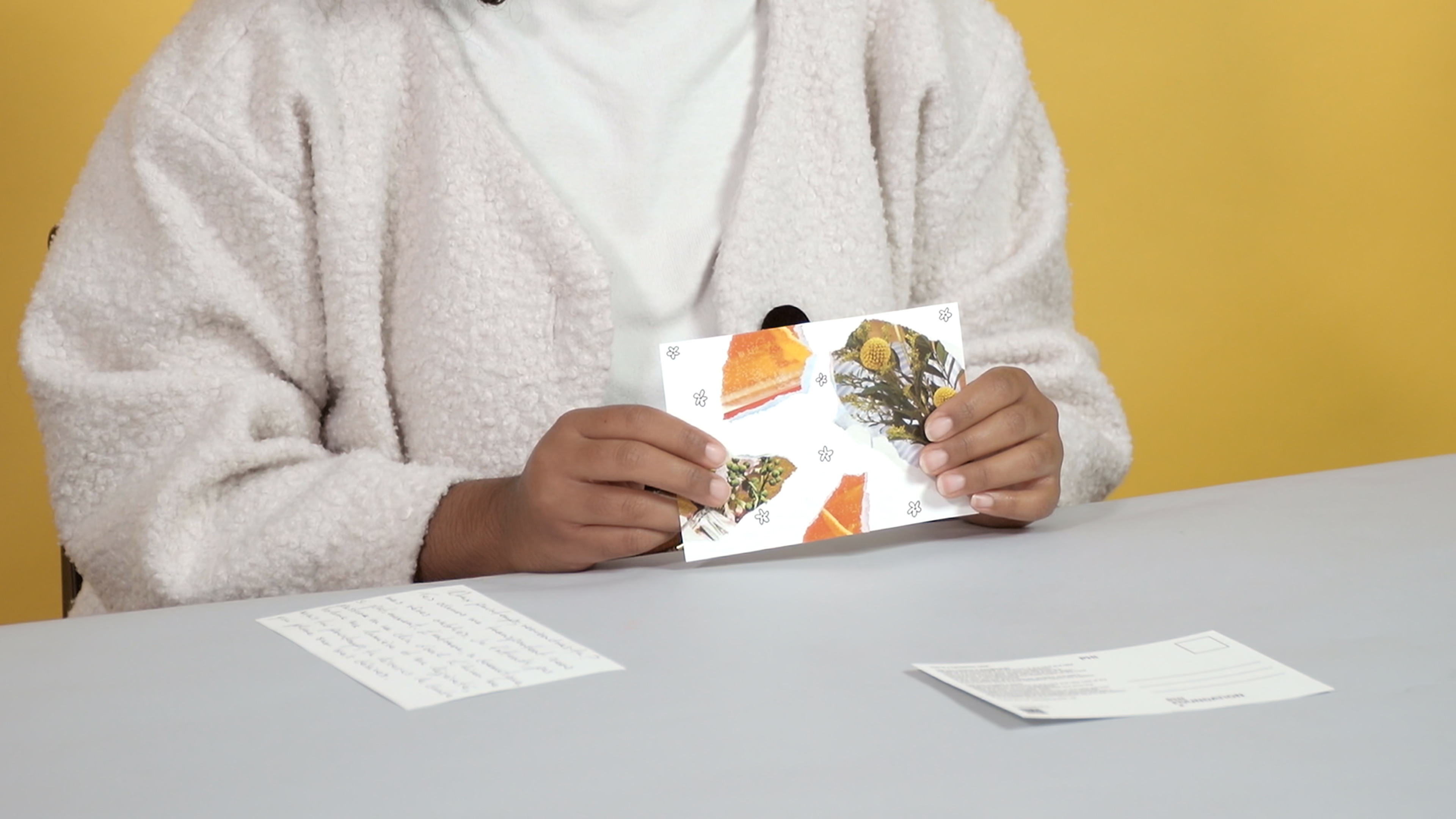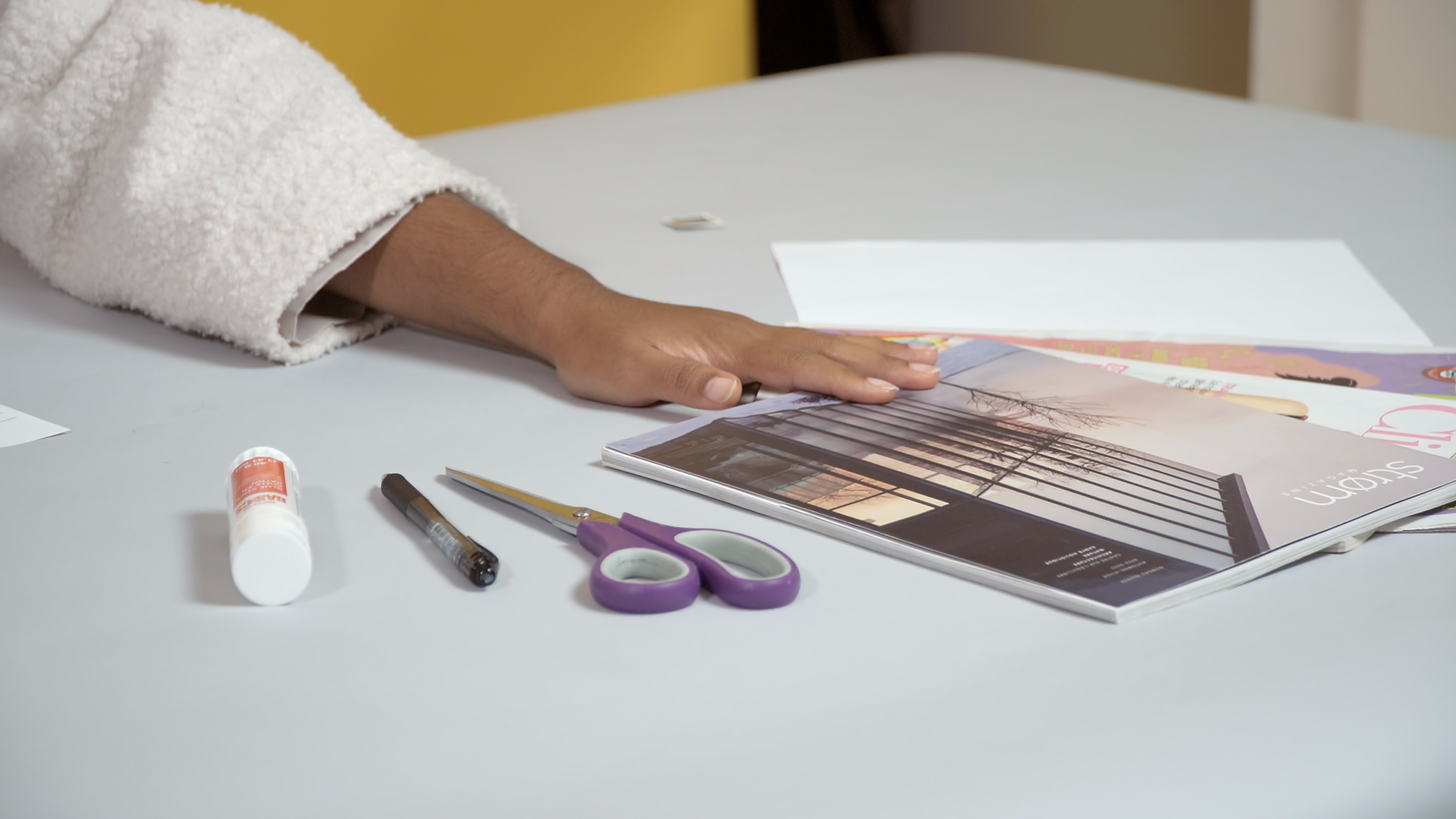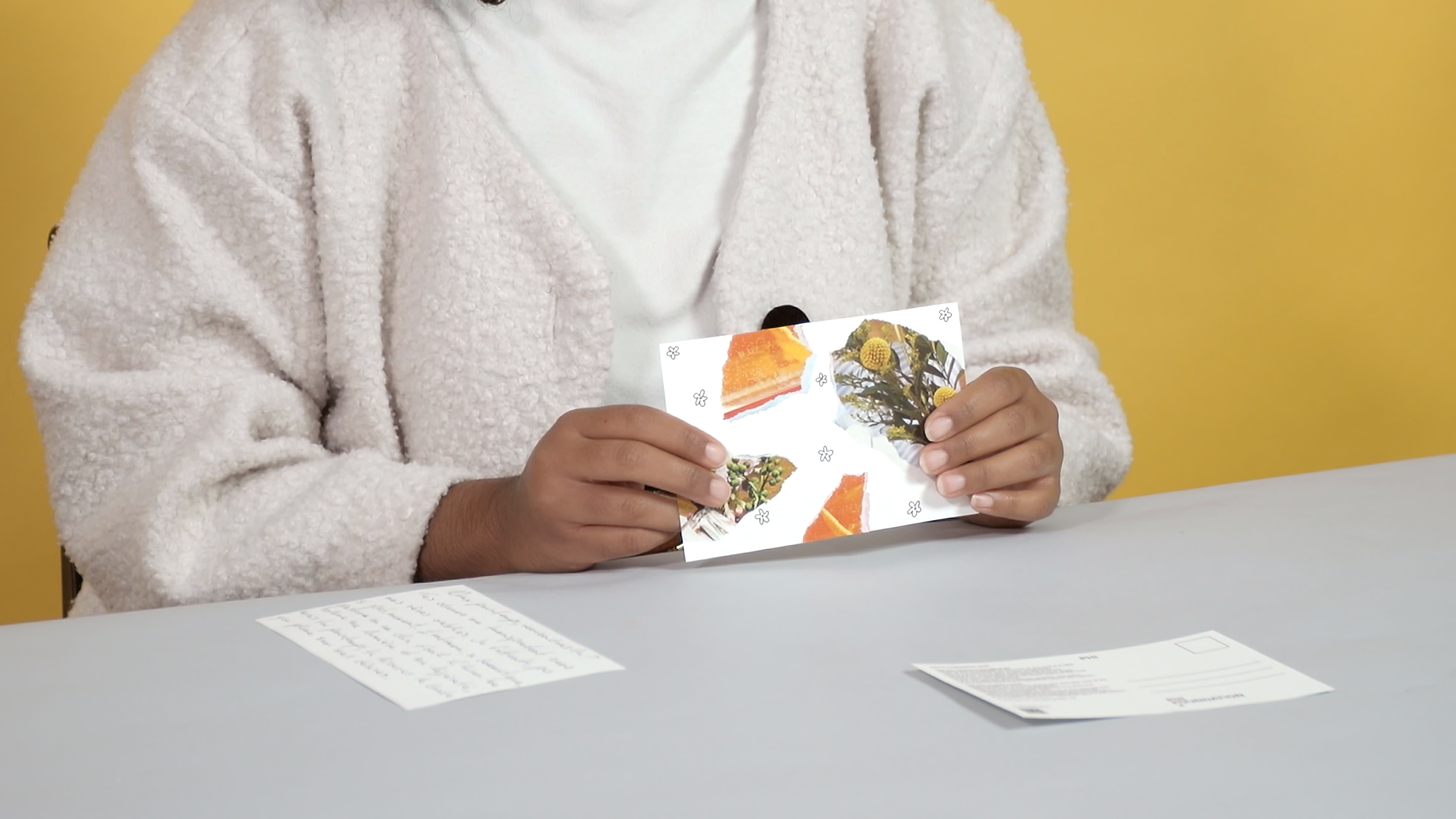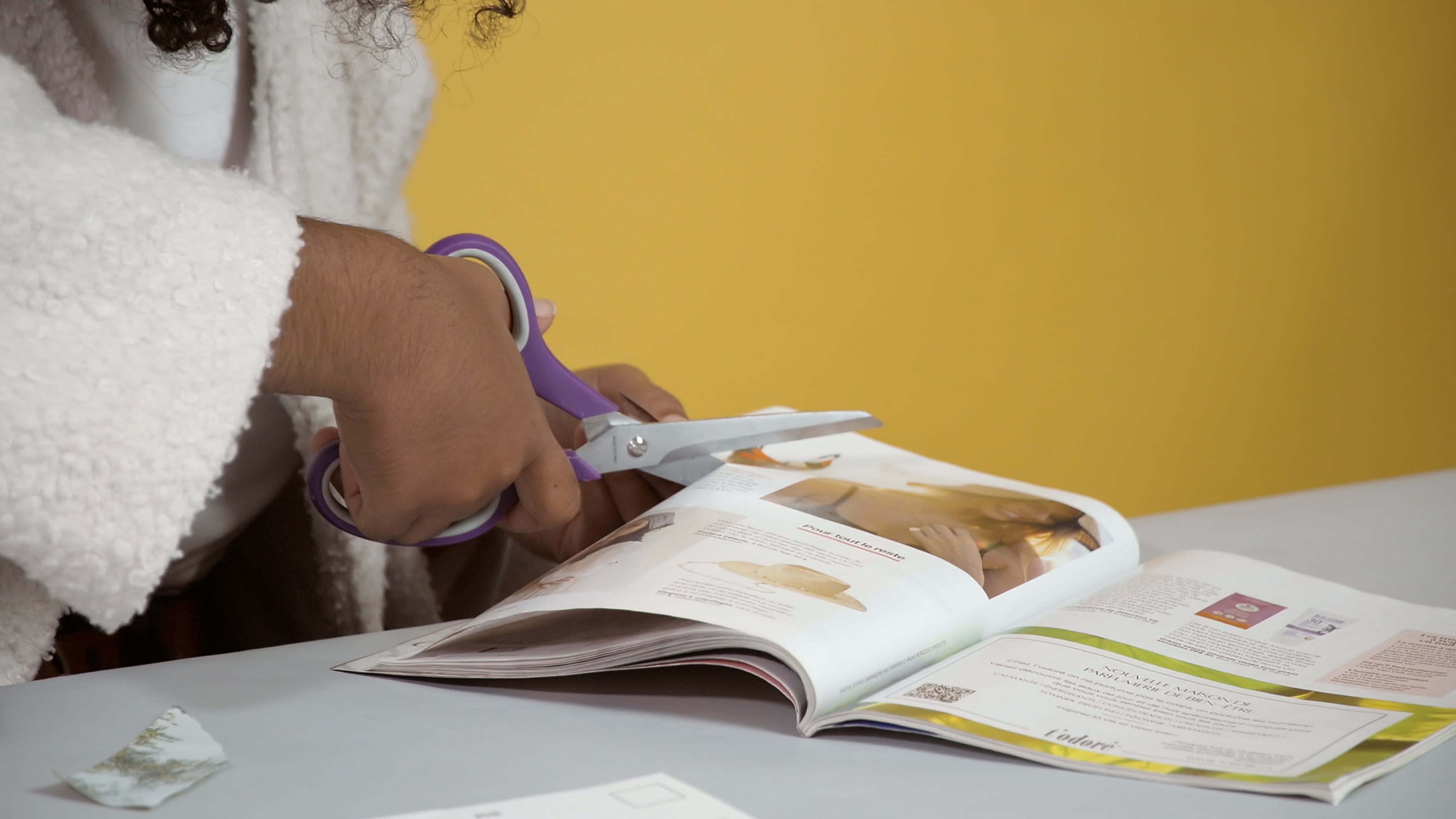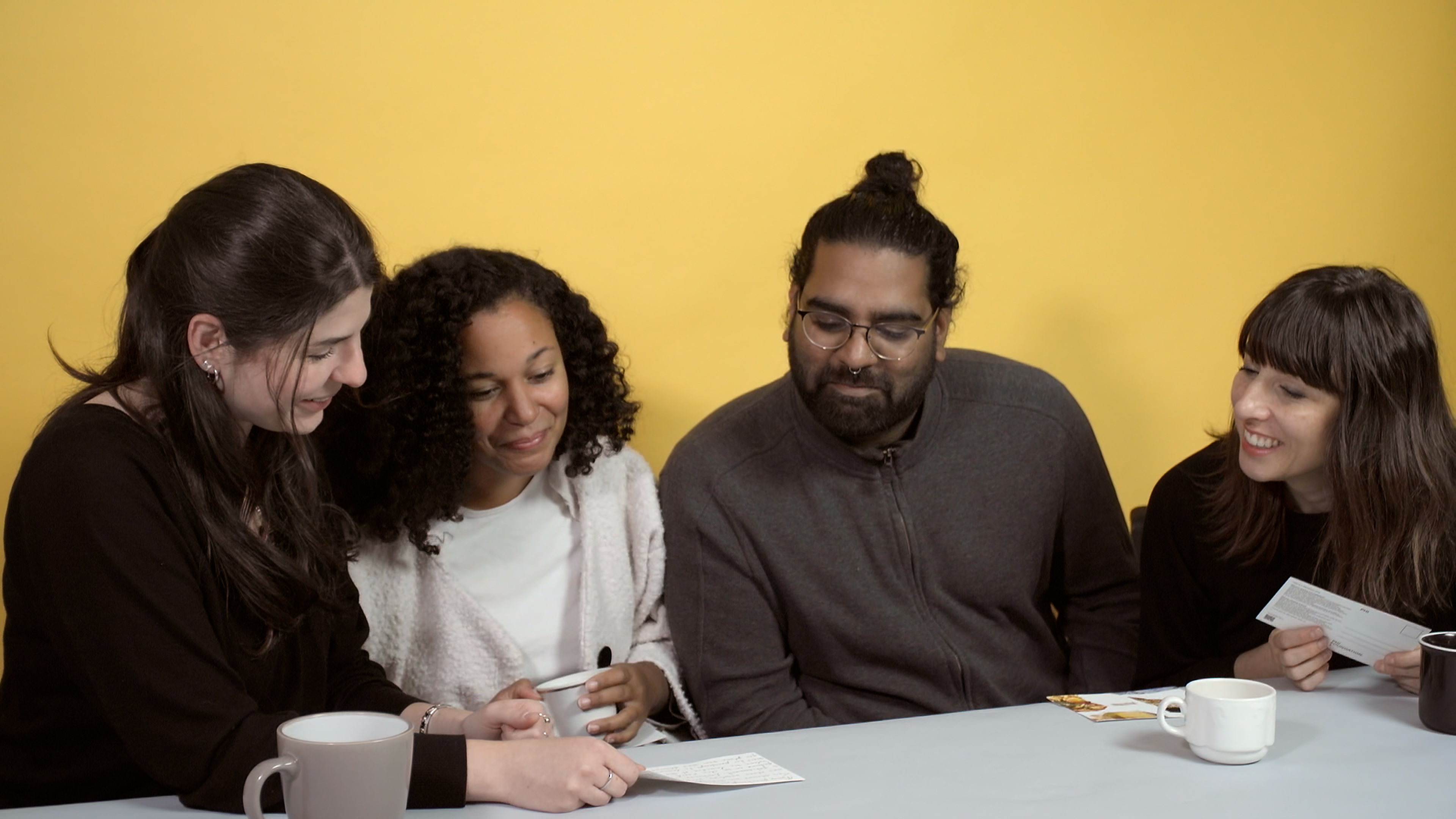Theme: Resonance
As part of our exploration of resonance, we’ll be making a tonoscope, which is an instrument that lets you actually see sound vibrations in action.
Resonance is when a sound is picked up and carried along through space and time. Resonance is when you hear your voice echo around you in a cave for example.
To make a tonoscope, you will need to create an echo chamber with a tube for the sound to enter through and a membrane on top that you’ll cover with salt.
Materials: A plastic flower pot; two cardboard paper-towel tubes—one short, one long; a white marker; a pair of scissors; a hobby knife; a big balloon; a cardboard strip; tape; coloured markers; and salt.
Step 1: First, trace a circle with the white marker on the side of the flowerpot, using the end of the cardboard tube. Then, trace another circle on the side of the shorter cardboard tube.
Step 2: For all the steps that call for a hobby knife, ask an adult for help to make sure it’s done safely.
Start by cutting out the bottom of your flowerpot with the knife, leaving a narrow border. Cut out the circles you drew in Step 1 so that you can stick the end of a cardboard tube into the holes.
Then, take your scissors and cut the end off of the big balloon.
Step 3: Decorate the cardboard tubes any way you want using the coloured markers.
Step 4: Use both hands and stretch the balloon across the wider end of your flowerpot.
Now stick the end of the short tube into the hole in the flowerpot and then stick the end of the long tube into the hole of the short tube. Don’t push it in too far, or the sound might not get through.
Use tape to plug one end of the short tube. The tubes carry the sound into your tonoscope.
Step 5: Make a circle around the rim of the flowerpot with the coloured paper strip and tape it.
Then spread a couple of small handfuls of salt on top of your tonoscope.
Step 6: Hold your mouth up to the tube and see what happens when you sing and talk into it. Try making lower and higher sounds.
You’ll see all kinds of different patterns forming as the salt moves to the vibrations and resonates with the sounds you make.
I hope you have lots of fun doing this project with your friends or family, at home or at school.
